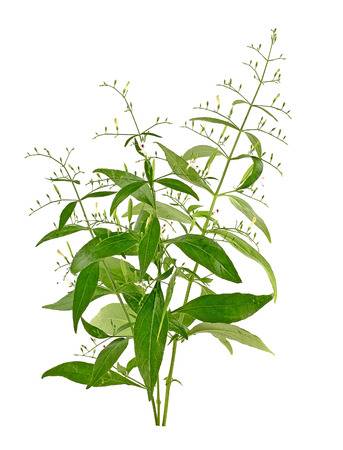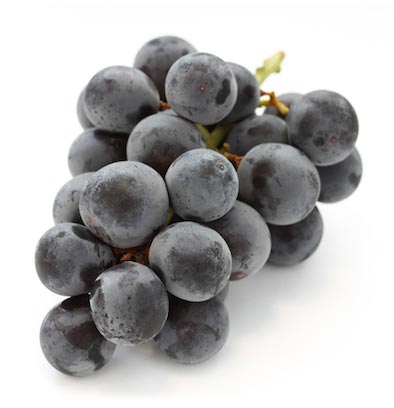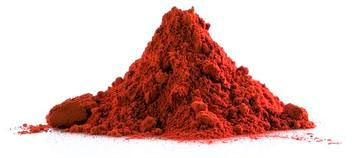Anti-âge Complex
Reinforces global health and cognitive functions
SUPPLEMENT FACTS
Serving size: 3 caps / Servings per container: 30
Bioperine® is a registered trade mark of Sabinsa Corp. U.S.A.
SUGGESTED USE
Caution: Pregnant or nursing mothers, children under 18 and those with a medical condition should consult a health care professional before using this product.
PRODUCT DETAILS
A product for everyone
"Anti-âge" contains some of the most healthy and powerful natural ingredients that protects the fundamental functions of the human organism. The natural components of Anti-âge are known for exerting a positive effect on a wide range of health concerns.
Anti-Aging Super Food Ingredients

Ashwagandha
Ashwagandha (Withania somnifera) is one of the most important herb in Indian traditional medicine. It is traditionally used for its wide ranging health benefits related to anxiety, neurological health and a variety of degenerative processes. It contains chemicals that seem to help reduce inflammation, to maintain blood pressure adequate levels and support the immune system.
Cognitive benefits: Research suggests that ashwagandha is very helpful for neuronal function. Dozens of studies show that Ashwagandha is beneficial against neuritic atrophy and synaptic loss. The constituents called withanolides have demonstrated an ability to restore presynapses and postsynapses, in addition to both axons and dendrites in cortical neurons after induced injury.
.

Andrographis Paniculata
A powerful herb traditionally used in Ayurveda and Chinese Medicine for supporting upper respiratory, liver, and immune system health. It is a very potent global health enhancer and several studies show that it inhibits aberrant cell growth and promotes apoptosis of cells with damaged DNA. It is also one of the most effective herb in down-regulating excessive inflammation responses. It naturally activates PPAR gamma, thereby inhibiting NF-kappa-beta, deactivating T-cell proliferation and helping reduce pro‐inflammatory cytokines. Andrographis seem to efficiently block T-cell activation in cases of detrimental T-cell responses.
Cognitive benefits: Andrographis P. supports brain integrity, improves learning and memory and seems particularily effective in keeping oxidative stress and neuro-inflammation at normal levels. Clinical studies indicate that Andrographis P. has benefits against the neurodegenerative process. It seems to alleviate the excess neuronal cell loss and it is able to facilitate neurogenesis.
.

Curcuma
The health benefits of Curcuma are numerous and it is just one of the most useful substances for a wide range of physiological functions. It also possesses anti-oxydant and anti-inflammatory properties and seems to be helpful against some forms of aberrant cells multiplication. Curcuma also preserves and helps the synthesis of DHA content in the brain and liver, it supports heart health to reduce lipid and plaque levels in arteries, and it aids in the maintenance of healthy sugar levels.
Cognitive benefits: Curcuma has shown to alleviate cognitive decline associated with aging. It protects neurons and is able to reduce Beta-amyloid build-up in neural tissue. Studies tend to demonstrate that Curcuma contributes to the regeneration of the brain and help with neurological didfunctions. Curcuma appears to boost differentiation of stem cells into neurons.
.

Blueberries
Blueberries have a very complex biochemistry and contain many phytonutrients among which very potent anthocyanins and pterostilbene. These constituents fight oxidation and studies seem to reveal the ability of blueberry polyphenols to modulate genes associated with aging itself.
It appears that blueberries delay the aging process through numerous mechanisms. They can be exceptionally good at promoting repair of DNA strands and at optimizing immunity at the cellular level. These functions are essential for preventing senescent and environmental impacts that lead to very serious complications. Numerous studies seem to indicate that blueberry extracts can both prevent DNA damage and promote its rapid and accurate repair. Blueberries can act very quickly and can significantly reduce DNA damage (-18%) just 1 hour after consumption.
Cognitive benefits: Blueberries can improve memory and sustain healthy neuronal function to aged brains. Studies show that blueberries can improve cognition in people undergoing cognitive decline, but evidence suggests that they can do so in healthy young people as well. They may also have a role to play in promoting the growth of nervous tissue and contribute to modulate neurological inflammation. In clinical trials the decline in NMDA receptor function seen with aging appears to be restored to the levels of youthful controls with daily ingestion of blueberry extracts.
.

Resveratrol
Resveratrol is an effective compound that has been extensively studied for its wide array of benefits. Resveratrol is known for its potential ability to support healthy cellular behavior while encouraging cardiovascular health and promoting healthy insulin sensitivity. It also enhances mitochondrial function, promotes a proper inflammatory response, helps in protecting against the effects of a high-fat diet and can be helpful in maintaining cognitive health.
Resveratrol has the ability to stimulate Sirtuin1 (SIRT1), a master gene involved in the regulation of cellular energy metabolism, modulating gene transcription and preventing DNA damage.
Resveratrol stimulates the healthy process of programmed cell death once they have reached the end of their life span, hence reducing the number of dysfunctional cells in the body that would emit pro-inflammatory signals. Resveratrol can support vascular health and can maintain appropriate endothelial function in the elderly.
Cognitive benefits: Resveratrol has the ability to help restore the blood-brain barrier integrity and it can prevent the entry of unwanted molecules that would exacerbate brain inflammation and kill neurons. A study found that taking resveratrol leads to a 50% reduction in matrix metalloproteinase-9 (MMP-9) levels in the cerebrospinal fluid. Low MMP-9 levels are required to maintain the blood-brain barrier function and MMP-9 is decreased when sirtuin1 (SIRT1 gene) is activated. Researchers also found that resveratrol increased the level of molecules linked to a long-term beneficial immune reaction involving inflammatory cells that are resident in the brain. Resveratrol triggers an adequate immune response encouraging the removal and degradation of neurotoxic proteins.
.

Astaxanthin
This carotenoid found in some microalgae, krill, shrimp or salmon posesses exceptional antioxidant properties. It is a broad spectrum antioxydant, meaning that it can target many different types of free radicals and it demonstrated higher antioxidant activity compared to other dietary antioxidants.
But that is not all, antioxidants are generally caterogorized into two groups, water soluble and fat soluble ones. Water soluble antioxydants perform in the fluids outside and inside the cells while fat soluble antioxidants protect the cell membranes. Astaxanthin is unique and it can do both tasks.
Astaxanthin can support a healthy heart and cardiovascular system. One study revealed that taking astaxanthin for two months reduces the level of C-reactive protein (CRP) by 20%. CRP is a very accurate marker of systemic inflammation and linked to heart issues. Astaxanthin is able to cross the blood-retinal barrier and therefore has significant benefits on eye health.
Astaxanthin is also extremely beneficial for skin health. It acts on all layers of the skin and studies have shown over a period of 8 weeks a significant reduction in the appearance of fine lines and wrinkles as well as an improvement of elasticity and higher moisture levels.
Cognitive benefits: Because astaxanthin is able to cross the blood-brain barrier is can exert its properties on the brain. Results from the current research "suggest neuroprotective properties including anti-inflammatory, anti-apoptotic, and antioxidant effects, as well as the potential to promote or maintain neural plasticity."*
.
References:
• Dong Y, Guha S, Sun X, Cao M, Wang X, Zou S. Nutraceutical interventions for promoting healthy aging in invertebrate models. Oxid Med Cell Longev. 2012;2012:718491. Peng C, Wang X, Chen J, et al. Biology of ageing and role of dietary antioxidants. Biomed Res Int. 2014;2014:831841. Liu W, Lu X, He G, et al. Protective roles of Gadd45 and MDM2 in blueberry anthocyanins mediated DNA repair of fragmented and non-fragmented DNA damage in UV-irradiated HepG2 cells. Int J Mol Sci. 2013;14(11):21447-62. McAnulty LS, Collier SR, Landram MJ, et al. Six weeks daily ingestion of whole blueberry powder increases natural killer cell counts and reduces arterial stiffness in sedentary males and females. Nutr Res. 2014 Jul;34(7):577-84. Aiyer HS, Vadhanam MV, Stoyanova R, Caprio GD, Clapper ML, Gupta RC. Dietary berries and ellagic acid prevent oxidative DNA damage and modulate expression of DNA repair genes. Int J Mol Sci. 2008 Mar;9(3):327-41. Fecci PE, Mitchell DA, Whitesides JF, et al. Increased regulatory T-cell fraction amidst a diminished CD4 compartment explains cellular immune defects in patients with malignant glioma. Cancer Res. 2006 Mar 15;66(6):3294-302. Lappin MB, Campbell JD. The Th1-Th2 classification of cellular immune responses: concepts, current thinking and applications in haematological malignancy. Blood Rev. 2000 Dec;14(4):228-39. Tanigawa T, Iso H, Yamagishi K, et al. Association of lymphocyte sub-populations with clustered features of metabolic syndrome in middle-aged Japanese men. Atherosclerosis. 2004 Apr;173(2):295-300. Mauro C, Marelli-Berg FM. T cell immunity and cardiovascular metabolic disorders: does metabolism fuel inflammation? Front Immunol. 2012 Jun 26;3:173. Rakhshandehroo M, Kalkhoven E, Boes M. Invariant natural killer T cells in adipose tissue: novel regulators of immune-mediated metabolic disease. Cell Mol Life Sci. 2013 Dec;70(24):4711-27. Huh JY, Park YJ, Ham M, Kim JB. Crosstalk between adipocytes and immune cells in adipose tissue A single portion of blueberry (Vaccinium corymbosum L) improves protection against DNA damage but not vascular function in healthy male volunteers. Nutr Res. 2013 Mar;33(3):220-7. doi: 10.1016/j.nutres.2012.12.009. Resveratrol: Gu J, Hu W, Zhang, DD. Resveratrol, a polyphenol phytoalexin, protects against doxorubicin-induced cardiotoxicity. J Cell Mol Med. 2015 Jul 14. Xu J, Li L, Qian Z, et al. Reduction of PTP1B by RNAi upregulates the activity of insulin controlled fatty acid synthase promoter. Biochem Biophys Res Commun. 2005 Apr 8;329(2):538-43 González-Rodríguez, Á., Santamaría, B., Mas-Gutierrez, et al. Resveratrol treatment restores peripheral insulin sensitivity in diabetic mice in a sirt1-independent manner. Mol Nutr Food Res. 2015 Aug;59(8):1431-42. Childs BG, Baker DJ, Kirkland JL, Campisi J, van Deursen JM. Senescence and apoptosis: dueling or complementary cell fates? EMBO Rep. 2014 Nov;15(11): 1139-53. Resveratrol induces mitochondrial respiration and apoptosis in SW620 colon cancer cells. Biochim Biophys Acta. 2016 Oct 17. pii:S0304-4165(16)30383-X. DOI: 10.1016/j.bbagen.2016.10.009 Ghosh S, Liu B, Zhou Z. Resveratrol activates SIRT1 in a Lamin A-dependent manner. Cell Cycle. 2013;12(6):872-6. The effects of resveratrol on aging vessels. Exp Gerontol. 2016 Sep 22;85:41-47. DOI: 10.1016/j.exger.2016.09.016 Neuroprotective effect of resveratrol against brain ischemia reperfusion injury in rats entails reduction of DJ-1 protein expression and activation of PI3K/Akt/GSK3b survival pathway. Arch Physiol Biochem. 2016 Oct;122(4):200-213 DOI:10.1080/13813455.2016.1182190 Wang R, Liu YY, Liu XY, et al. Resveratrol protects neurons and the myocardium by reducing oxidative stress and ameliorating mitochondria damage in a cerebral ischemia rat model. Cell Physiol Biochem. 2014;34(3):854-64. Funderburk SF, Marcellino BK, Yue Z. Cell “self-eating” (autophagy) mechanism in Alzheimer’s disease. Mt Sinai J Med. Jan-Feb 2010;77(1):59-68. Kang H, Jung J-W, Kim MK, et al. CK2 Is the regulator of SIRT1 substrate-binding affinity, deacetylase activity and cellular response to DNA-damage. Bielinsky A-K, ed. PLoS ONE. 2009;4(8):e6611. Georgetown University Medical Center. "Resveratrol appears to restore blood-brain barrier integrity in Alzheimer's disease." ScienceDaily. ScienceDaily, 27 July 2016. Astaxanthin: Neuroprotective mechanisms of astaxanthin: a potential therapeutic role in preserving cognitive function in age and neurodegeneration. GeroScience. 2017 Feb; 39(1): 19–32. Astaxanthin decreased oxidative stress and inflammation and enhanced immune response in humans. Nutrition & Metabolism20107:18 Effect of daily use natural astaxanthin on C-reactive protein. Health Research & Studies Center, Los Altos, CA. Gene A. Spiller and al. January 31, 2006 The Protective Effects of a Dietary Carotenoid, Astaxanthin, Against Light-Induced Retinal Damage Tomohiro Otsuka et al. J-STAGE Journal of Pharmacological Sciences (2013)
| Subtitle | Reinforces global health and cognitive functions |
|---|


